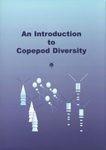World / Checklist Flora / Fauna Identification Key
By: Florian Altermatt(Author), Roman Alther(Author), Cene Fišer(Author), Vid Švara(Author)
389 pages, 125 colour photos, b/w line drawings, and colour & b/w distribution maps
![Fauna Helvetica 32: Amphipoda [German] Fauna Helvetica 32: Amphipoda [German]]()
Click to have a closer look
About this book
Customer reviews
Related titles
About this book
Language: German with English summary and trilingual keys in English, German, and French
Amphipods are a highly diverse group of aquatic invertebrates with over 10,000 described species globally. Despite their ecological and economic significance, the knowledge on amphipods in Switzerland was hitherto limited, and until now no checklist, distribution maps, or broadscale estimates on genetic, functional, and morphological diversity of all amphipod species in Switzerland existed. This book covers all 40 known amphipod species ever recorded in Switzerland, including 27 native and 13 nonnative species. Furthermore, a few species to be expected in Switzerland are covered.
The book starts with an introduction giving a general overview of the morphology, biology, and general ecology of amphipods. It also specifically addresses species richness and general diversity patterns of amphipods in Switzerland, with a focus on the countries’ major drainage basins (Rhine, Rhone, Inn/Danube, and Ticino) and its topographic and elevational structure. The introduction then gives a historical overview of research on amphipods in Switzerland and an overview of amphipod sampling, preservation, and identification methods. It ends with an up-to-date checklist of all amphipod species ever recorded in Switzerland, but also includes species which are likely to occur in Switzerland, or likely to be found in the near future due to recent range expansions and invasions of species
Subsequently, the book contains an identification key for all these species. The key is given in German, French and English. It has been developed based on existing keys but also on the authors' expertise, and is extensively illustrated. Illustrations are mostly based on individuals collected in Switzerland. Finally, the book provides a detailed discussion of the faunistics, ecology, and distribution for all amphipod species in Switzerland. These species treatments are identically structured, starting with a synoptic summary, information on the type locality, a discussion of the species’ general distribution, the species’ distribution in Switzerland, and its elevational distribution. Furthermore, and if available, information is provided on the species’ habitat and ecology, whereby the authors combine information from the literature as well as their hitherto unpublished knowledge on
these species. For each species they then discuss its status in Switzerland, classifying species as native, nonnative, or invasive to Switzerland. Finally, they give relevant information on the morphology and identification of the. For each species, they provide up-to-date distribution maps and, if available, illustrate the species and its habitat in Switzerland with photos.
Customer Reviews
World / Checklist Flora / Fauna Identification Key
By: Florian Altermatt(Author), Roman Alther(Author), Cene Fišer(Author), Vid Švara(Author)
389 pages, 125 colour photos, b/w line drawings, and colour & b/w distribution maps





![Fauna Helvetica 32: Amphipoda [German] Fauna Helvetica 32: Amphipoda [German]](http://mediacdn.nhbs.com/jackets/jackets_resizer_xlarge/24/246926.jpg?height=620)
![Fauna Helvetica 32: Amphipoda [German]](http://mediacdn.nhbs.com/jackets/jackets_resizer/24/246926.jpg)
![Fauna Helvetica 32: Amphipoda [German]](http://mediacdn.nhbs.com/jackets/jackets_resizer/24/246926_1.jpg)
![Fauna Helvetica 32: Amphipoda [German]](http://mediacdn.nhbs.com/jackets/jackets_resizer/24/246926_2.jpg)
![Fauna Helvetica 32: Amphipoda [German]](http://mediacdn.nhbs.com/jackets/jackets_resizer/24/246926_3.jpg)
![Fauna Helvetica 32: Amphipoda [German]](http://mediacdn.nhbs.com/jackets/jackets_resizer/24/246926_4.jpg)
![Fauna Helvetica 32: Amphipoda [German]](http://mediacdn.nhbs.com/jackets/jackets_resizer/24/246926_5.jpg)




![Fauna Helvetica 29: Apidae 1 [French / German]](http://mediacdn.nhbs.com/jackets/jackets_resizer_medium/24/240847.jpg?height=150&width=105)
![Fauna Helvetica 4: Apidae 2 [French / German]](http://mediacdn.nhbs.com/jackets/jackets_resizer_medium/10/106801.jpg?height=150&width=102)
![Fauna Helvetica 26: Apidae 6 [French / German]](http://mediacdn.nhbs.com/jackets/jackets_resizer_medium/19/198874.jpg?height=150&width=105)
![Fauna Helvetica 32: Amphipoda [German]](http://mediacdn.nhbs.com/jackets/jackets_resizer_medium/24/246926.jpg?height=150&width=105)
![Fauna Helvetica 7: Pisces Atlas und Bestimmungshilfe Atlas [French / German] (2-Volume Set)](http://mediacdn.nhbs.com/jackets/jackets_resizer_medium/14/144904.jpg?height=150&width=211)
![Fauna Helvetica 15: Decapoda [French / German]](http://mediacdn.nhbs.com/jackets/jackets_resizer_medium/15/156390.jpg?height=150&width=105)
![Fauna Helvetica 23: Vespoidea 1 [German]](http://mediacdn.nhbs.com/jackets/jackets_resizer_medium/17/177989.jpg?height=150&width=100)
![Fauna Helvetica 31: Vespidae [French / German]](http://mediacdn.nhbs.com/jackets/jackets_resizer_medium/24/247001.jpg?height=150&width=104)
![Fauna Helvetica 27: Plecoptera [French / German]](http://mediacdn.nhbs.com/jackets/jackets_resizer_medium/20/204681.jpg?height=150&width=104)




![The Encyclopedia of the Swedish Flora and Fauna, Kräftdjur: Krill – Tiofotade Kräftdjur [Swedish]](http://mediacdn.nhbs.com/jackets/jackets_resizer_medium/26/268174.jpg?height=150&width=118)



![Les Crustacés Décapodes des Petites Antilles: Avec de Nouvelles Observations pour Saint-Martin, la Guadeloupe et la Martinique [The Crustacean Decapods of the Lesser Antilles: With New Observations for Saint-Martin, Guadeloupe and Martinique]](http://mediacdn.nhbs.com/jackets/jackets_resizer_medium/24/245203.jpg?height=150&width=106)



![Fauna Helvetica 34: Bombyliidae [French / German]](http://mediacdn.nhbs.com/jackets/jackets_resizer_medium/26/263283.jpg?height=150&width=105)
![Fauna Helvetica 14: Limoniidae & Pediciidae de Suisse [English / French / German]](http://mediacdn.nhbs.com/jackets/jackets_resizer_medium/15/156389.jpg?height=150&width=96)
![Fauna Helvetica 17: Amphibienlarven - Bestimmung [German]](http://mediacdn.nhbs.com/jackets/jackets_resizer_medium/16/169842.jpg?height=150&width=103)
![Les Hyménoptères Symphites du Jura Franco-Suisse, Piémont Gessien et Vaud (Hymenoptera, Symphyta) [The Hymenopteran Symphyta of the Franco-Swiss Jura, Piedmont and Vaud]](http://mediacdn.nhbs.com/jackets/jackets_resizer_medium/23/234863.jpg?height=150&width=101)
![Fauna Helvetica 22: Säugetiere Bestimmung [Mammals of Switzerland] [German]](http://mediacdn.nhbs.com/jackets/jackets_resizer_medium/19/198875.jpg?height=150&width=104)
![Fauna Helvetica 19: Larve Degli Anfibi - Determinazione [Italian]](http://mediacdn.nhbs.com/jackets/jackets_resizer_medium/16/169844.jpg?height=150&width=103)